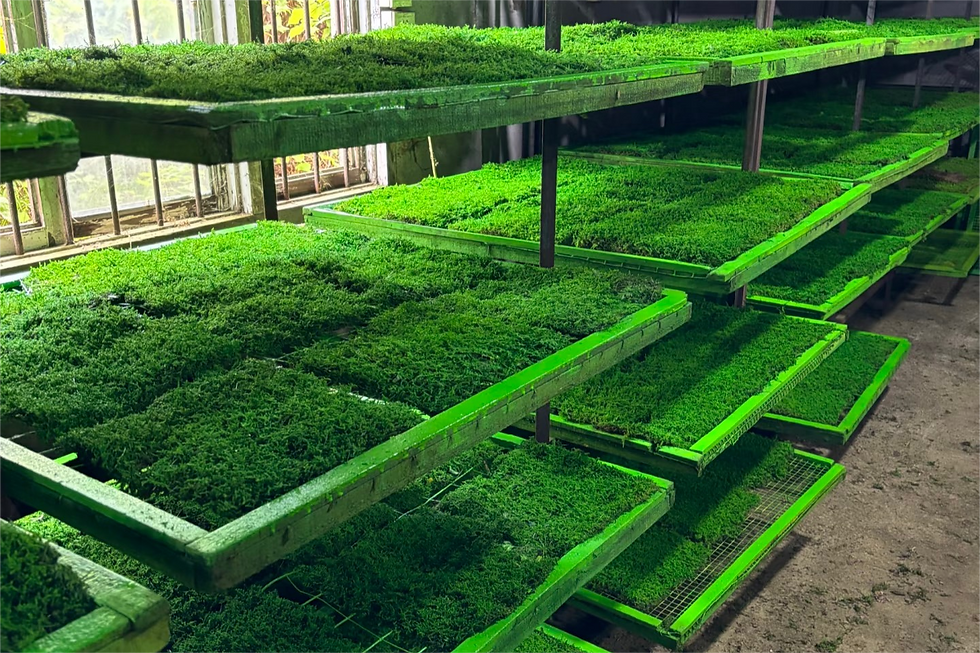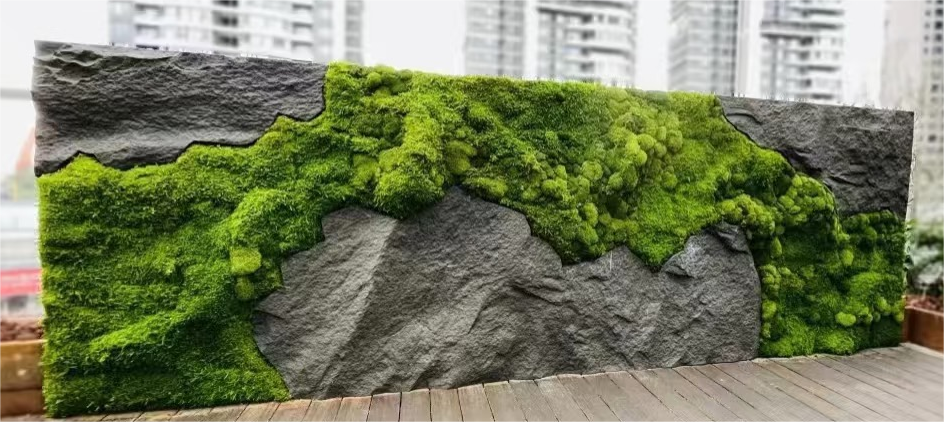How to Judge Preserved Moss Quality: What Every Designer and Contractor Must Know
- Annie Zhang

- Jul 31
- 4 min read

In the world of high-end interior design and commercial landscaping, preserved moss has quickly become a go-to material. It's natural, maintenance-free, and undeniably beautiful. But not all preserved moss is created equal. For architects, interior designers, and contractors working on green wall installations, retail displays, or hospitality spaces, knowing how to distinguish high-quality moss from subpar batches is more than an aesthetic concern—it's a cost-saving, reputation-protecting necessity.
If you’ve ever received moss that crumbled during installation, looked dull and flat on the wall, or shed so badly it had to be replaced, you know exactly how frustrating poor moss quality can be. In this guide, I’ll walk you through the essential criteria to evaluate preserved moss quality before you commit to a supplier or a bulk order.
Index:
What Is Preserved Moss and Why Quality Varies
Preserved moss is real moss that has undergone a chemical treatment (typically using glycerin and food-grade dyes) to replace its natural moisture. This process "freezes" its appearance at peak freshness and makes it durable for indoor use. However, the preservation technique, source material, and processing quality can vary greatly between manufacturers.
Some moss is over-dried, making it brittle and prone to crumbling. Others may use harsh or outdated chemicals, which not only reduce longevity but can also cause odor or safety concerns indoors. So, it’s not just about choosing preserved moss; it's about choosing moss that was preserved well.
👉 Need help sourcing moss for your next project? We offer high-quality samples and expert advice. Email us at: sales@sweetie-group.com
Appearance & Color Retention
The most immediately noticeable indicator of quality is how the moss looks. High-quality preserved moss should be:
Vibrant in color with no signs of yellowing or patchy tones.
Uniform in shade, especially when you're using large surface areas like moss walls.
Natural in texture, not plasticky or overly glossy.
Poor-quality moss often fades after just a few months of exposure to indoor lighting or looks uneven due to inconsistent dyeing processes. Always request photos of large panel applications—not just macro shots—to evaluate visual consistency.
Texture & Fluffiness
Soft, fluffy moss not only looks better but is easier to install and has a higher coverage rate. Good moss should feel:
Soft to the touch, almost sponge-like.
Springy and three-dimensional.
Easy to handle without breaking.
If the moss flattens easily, feels rough, or breaks apart when touched, it likely lacks adequate glycerin content or was poorly processed. This affects the final aesthetic and requires more moss to achieve the same visual volume—which means higher material cost.
Durability & Fragility
Durability is key for commercial spaces where moss walls are expected to last for years. Here are the qualities to look for:
Minimal shedding when handled or trimmed.
Resistance to UV discoloration, especially near windows.
Stable shape over time without curling or hardening.
Quality preserved moss should last 5 to 10 years indoors under normal conditions. Brittle moss may fall apart during installation or begin to degrade within months, which adds to labor and replacement costs.

Fragmentation & Loss Rate
Moss that breaks into crumbs not only causes installation headaches but also drives up your total project cost. Ask your supplier:
What is the typical usable rate of their moss (i.e., how much of a bulk order is intact and usable)?
Can they provide packaging that minimizes compression damage during transit?
Here’s a comparison table to illustrate how fragmentation affects your cost:
In our own projects, we’ve found that moss with low fragmentation can save up to 15-20% on material waste alone. That’s significant, especially for large-scale wall installations.
Eco-Friendliness and Chemical Safety
For many clients today, especially corporate and retail brands, sustainability and safety matter. Ask whether the moss:
Is preserved using non-toxic glycerin and food-grade dyes.
Is formaldehyde-free and VOC compliant.
Comes from responsibly harvested sources.
Low-quality moss may carry chemical residues or strong odors. This can trigger indoor air quality concerns, especially in enclosed spaces like spas, offices, and restaurants.
Supplier Reliability and Certifications
Reliable suppliers should be transparent about their sourcing, processing, and certifications. Look for those who can provide:
REACH or CE certifications.
Phytosanitary certificates for international shipping.
Technical data sheets on dye and preservation methods.
A quality control process for every batch.
👉 Want supplier documentation or samples to compare? Reach out to us and we’ll send you supporting materials for evaluation: sales@sweetie-group.com
If a supplier is vague or unwilling to share this information, that’s a red flag.

Installation Compatibility and Customization
Good moss is easy to work with. That means:
Panels or sheets are evenly cut and sized.
Moss density is consistent to avoid uneven surfaces.
Moss adheres well to typical backings (acrylic boards, mesh, MDF, etc.).
Ask if the supplier offers design consulting or sample layouts, which can significantly ease your workload when planning custom shapes, letters, or brand logos.
What to Do Before Placing a Bulk Order
Before placing a large order, request a sample kit. Here's what to test:
Rub it between your fingers – Does it crumble?
Look at color under light – Is it even?
Check the smell – Does it have any chemical or musty odor?
Squeeze and release – Does it spring back?
These simple checks will tell you more than any catalog ever could.
Final Thoughts: Choosing Moss That Works as Hard as You Do
Preserved moss isn’t just a decoration. For design professionals, it’s a medium that needs to deliver aesthetics, reliability, and longevity. By carefully evaluating texture, appearance, fragmentation, and supplier transparency, you can avoid costly mistakes and deliver better results for your clients.
At Sweetie-Gifts, we’ve spent over 16 years helping design teams, architects, and commercial contractors source high-quality preserved moss that performs beautifully in real-world conditions. Our moss is soft, vibrant, and rigorously tested for minimal loss rate. If you need design support, color matching, or sample testing, we're happy to assist.
Email us at: sales@sweetie-group.com to request a sample or learn more about how we can support your next moss wall project.

Warm Regards,
CEO of Sweetie-Group









Comments